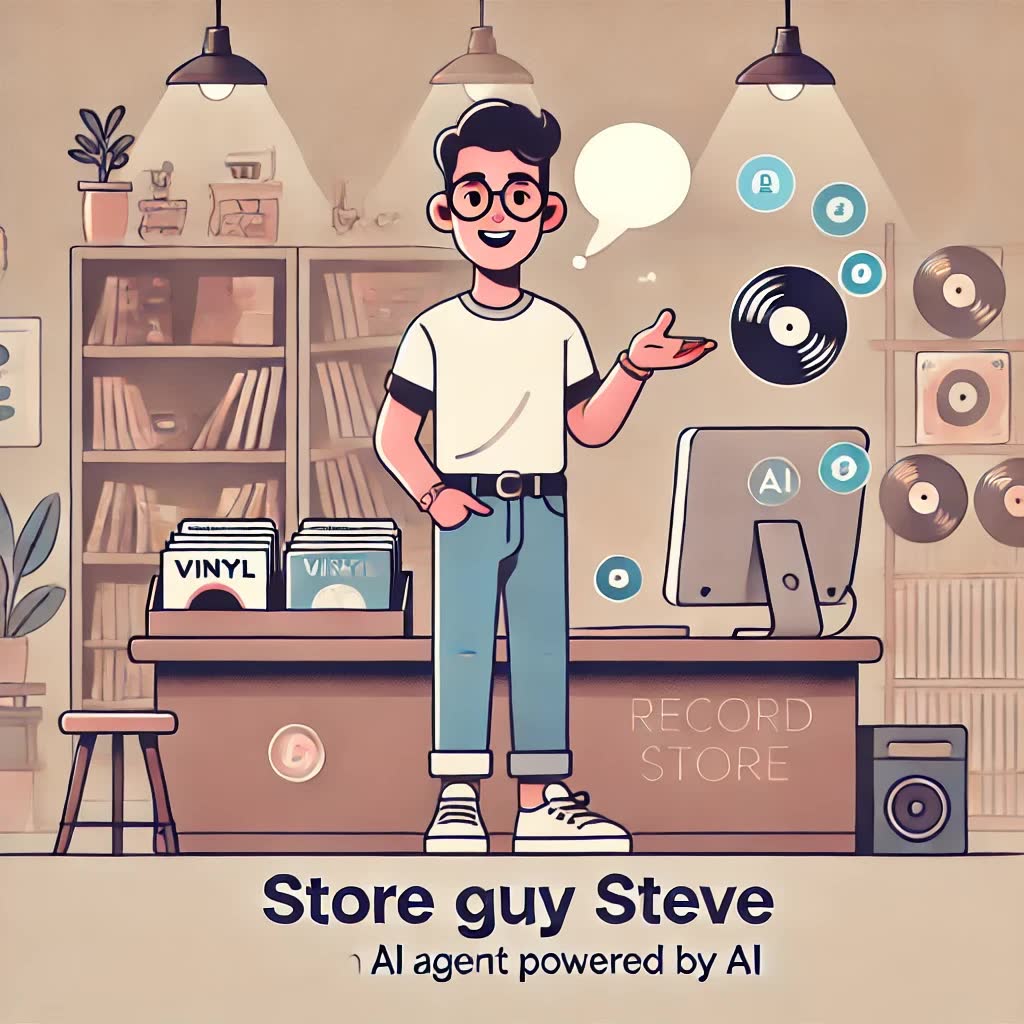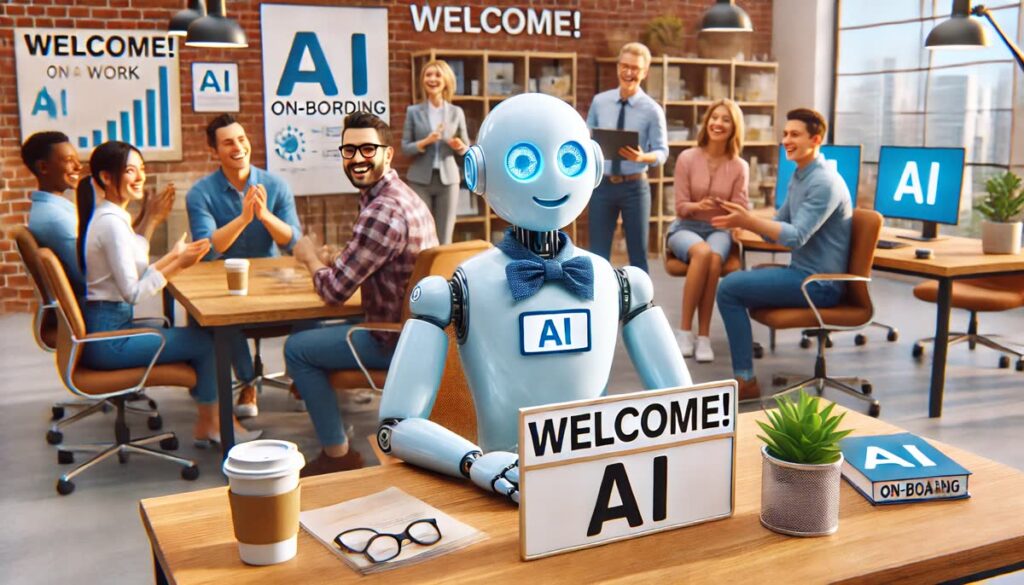Why Chatbots Are Failing Customers!
Why Chatbots Are Failing Customers
Have you ever had an AI Chatbot make you want to throw your laptop out the window?
If the answer is yes, don’t worry. You’re not alone.
Research from U-Jet (the world’s most advanced contact center platform) shows that over 80% of consumers have been so frustrated with AI Chatbot Agents they simply walked away.
That’s bad news for businesses relying on automation to deliver a seamless AI customer experience. The good news? There is a fix. And it’s not as costly or complex as most companies assume.
In this post, I’ll show you why most AI bots are failing businesses and frustrating customers. While introducing a smarter approach that will make your customers glad they spoke to an AI agent. (We call him Steve.)

What is the biggest problem with AI Chatbot development?
Put simply, most Chatbot developers have never worked with real customers, and it shows. That’s why most Chatbots fail to understand your customers’ needs.
It is not that Chatbots are bad at dealing with people. It is because the people developing AI Chatbots have very little, if any, frontline customer-facing experience.
Over 80% of consumers say interacting with a Chatbot increased their frustration. In fact:
- 78% were forced to escalate to a human agent.
- 63% said their Chatbot interaction didn’t resolve their issue.
- 72% felt Chatbots were a complete waste of time.
It’s no surprise that 54% of consumers still believe a live phone call delivers the fastest and best experience.
Source U-Jet Research – U-Jet is the worlds largest cloud contact center provider
Why Do Chatbots deliver a bad Customer Experience?
The Chatbot you are currently using — the one that keeps sending you back to the main menu or badgering you into buying something — was probably developed by a coder with no customer-facing experience, or a “tech bro” who joined the AI gold rush after watching a series of YouTube videos produced by another “tech bro.”
Right now, most businesses are paying for an AI agent that doesn’t really understand human-like AI interactions, or their customers. It follows scripts, misinterprets intent, and ultimately makes interactions worse. So how do we fix this?
Most chatbots fail because they’re built like machines — not trained like people.

From Scripts to Conversations: Introducing Psychological Coding
Most Chatbots fail because they’re built like machines, not trained like people.
This is why most customer-facing AI projects go wrong. They focus on code, not conversations. Let me explain.
As a business owner, you already know instinctively that the best leaders inspire their teams to go above and beyond. So why can’t your AI assistant be guided the same way?
As AI advances beyond rigid code structures and evolves into a more interaction-driven process, the way we motivate, communicate with, and guide AI will determine its true potential.
Think of the perfect working environment. Does the team leader simply bark orders and hand out tasks?
No. The best team leaders give you the bigger picture. They anticipate your questions before you ask them. They break down objections and inspire you to do your best work.
The best team leaders create an environment where you want to impress. Now ask yourself this: why can’t your AI assistant be guided the same way? Why can’t it be motivated, challenged, and inspired to perform at its best?
What is Psychological Coding?
Put simply, it is using language prompts instead of code tables. Psychological coding is the process of training AI Agents using only conversation.
In this blog, I won’t get too technical. I’ll keep things simple and rooted in real-world examples.
With this in mind, let me use a simple ChatGPT request to explain the basis of Psychological Coding.
I asked ChatGPT to: “Write a viral tweet that will get 10,000 likes.” This was the reply:
ChatGPT – Here’s a tweet designed to go viral, balancing humor, relatability, and engagement:
“I don’t chase dreams anymore. I just casually stroll towards them, hoping they notice me and make the first move.”
I’m sure you’ll agree — this is neither funny nor viral. Not if I tweeted it, anyway. But if Elon Musk or Tim Ferriss posted this, I guarantee it would get 10,000 likes.
Why? Because any celebrity or influencer with millions of followers could tweet the contents of their fridge and still rack up 10,000 likes.
What Happens When We Approach That Same Request More Intuitively?
Recently, I decided to revive an old Twitter account. The one I used to rage-tweet when I was giving up smoking.
The account had 40 followers and a feed full of angry political noise. Mostly accounts I’d followed during a time of frustration.
I wanted to repurpose my Twitter account and take it in a new direction.
Here’s the prompt I wrote:
I just logged into X for the first time in a very long time. I only have 40 followers, and my feed is as political as hell. I hate politics. I don’t follow the news. I don’t care for the news.
Objective: increase followers and depoliticize my feed. Tap into my brand: study the example blog posts and my website. We are creating a strategy, not content. How well does the existing brand fit into the bear pit that is X? Can we achieve growth and remain non-political?
This prompt wasn’t just a tweet request. It was part of a broader project testing how well ChatGPT could integrate with an evolving personal brand.
I didn’t want content. I wanted a strategic voice, guidance on navigating a politically charged platform while staying true to my tone and goals.
The prompt allowed ChatGPT to reference my project and context, allowing ChatGPT to build a structured and targeted response.
The first step? ChatGPT told me to depoliticize my feed by unfollowing everyone. An exercise I must admit I took great pleasure in.
Then it got interesting.
ChatGPT presented me with targeted advice that drew from my strengths and flagged weaknesses I needed to address:
Then it got interesting.

ChatGPT presented me with targeted advice that drew from my strengths and flagged weaknesses I needed to address:
ChatGPT: “X thrives on short-form, viral, and interactive content. Your humor and storytelling are perfect for building a cult-like following. Here’s how…”
This wasn’t the usual “post ten times a day and reply to big accounts” — the standard Google-scraped reply you often get when asking general questions.
By adding context and pointing ChatGPT in a specific direction, I’d created a curated response that aligned perfectly with my brand and personal goals.
AI Onboarding: The Missing Link in AI Agent Development
When you hire a new team member, you don’t just throw them at a task and hope for the best. You onboard them. You teach them your values, your processes, and how to interact with your customers.
AI thrives on context. Just ask it. No matter which platform you’re using, the answer never changes: more always equals more. The more detail and context you give, the greater the outcome. This is how you achieve better human-like AI interactions.
When I’m deep in business planning, some of my prompts read like short essays. But those long prompts aren’t about getting an instant result.
They’re about delivering context and inviting questions from my AI assistant.
When was the last time you invited questions from your AI assistant?
I end most complex prompts with a request for questions. Why?
Because it almost always highlights something I’ve missed — or something I hadn’t even considered.
For example, I often end complex prompts with the following statement: Do you have any questions? Are there any gaps or inaccuracies in this prompt?
When creating context-aware AI Agents, the most important aspect is AI onboarding. Before beginning any AI Agent project, it is important to ask yourself the following questions:
- What is the purpose of each interaction?
- What is the business?
- What are its values?
- Who are the customers?
- What outcome do I want from every interaction?
Asking yourself these questions helps to create an AI agent that doesn’t rely on the rigid, table-based question-and-response systems that frustrate your customers and drive them away.
Now, I know what you’re thinking: this sounds expensive and involves a team of developers.
In reality? No. That’s the beauty of Psychological Coding. We’re creating complex outcomes through large language model (LLM) training, using nothing more than words.
This is something many low-code AI developers are missing. And in many cases, they don’t have the real-world experience to develop context-aware AI Agents.
The customer-facing side of your business is the most important and delicate process there is. Any high-level customer service rep or sales professional is worth their weight in gold.
Why? Because they understand people and can communicate at the highest level.
With that in mind, why are so many businesses handing this over to generically scripted AI agents?
Call-and-Response vs. Conversational AI
Most businesses think they’re saving money with simple call-and-response bots. But here’s the truth: these bots deliver a poor AI customer experience, and ultimately alienate your customers.
Because they assume every interaction fits neatly into a predefined script. In reality, very few customer inquiries do.
What is call and response?
This is an important question — because now we can address an even bigger one: is it AI or just a well-marketed database?
A call-and-response table is simply a datasheet containing questions and answers. Think of it like a mind map.
Your customer asks a question, which generates a pre-determined response with options 1, 2, or 3.
Those responses then trigger a follow-up question.
At this point, the customer is usually sent back to the start or asked to submit their details.
This isn’t groundbreaking artificial intelligence. It’s essentially an automated FAQ section.
In many cases, it’s just a company’s FAQ page repackaged and sold as “AI” by an enthusiastic salesperson with a large social media following.
On the other hand, intelligently psychologically coded agents are different.
A large language model (LLM) is capable of conversation and problem-solving. But most businesses assume training intelligent virtual agents means spending tens of thousands on custom NLP models.
That’s exactly what some commission-hungry “chatbot” sellers told me.
When I asked about training my agent to be more “sales-focused,” I was told that AI development was expensive and I should allocate a budget north of $75,000 so an AI developer could create a bespoke natural language model for my business.
Luckily, I know better.
Training intelligent virtual agents doesn’t require a $75,000 price tag. It requires the correct business AI strategy. A strategy built around onboarding, providing context, and training an AI agent to respond like a human.
How Do You Train AI Agents to Respond Like Humans?
The big question is: can I make my AI Agent act more human? The answer is yes, and it is not as expensive and complex a process as you might initially think.
First, we need to understand what characteristics and qualities AI agents need to be more human:
- Express empathy in the customer service cycle.
- Understand cultural nuances in the retail environment.
- Stay focused on problem-solving in a sales environment.
These three qualities should be baked into any AI Agent’s understanding. Just as they should be characteristics any human agent involved in the customer service cycle should possess.
AI Agents can be developed to focus on these key characteristics through a series of targeted prompts deployed during an AI onboarding exercise.
When delivered effectively by a developer with extensive customer-facing and problem-solving expertise, you get an AI Agent capable of problem-solving, warming up sales leads, and ultimately making sales.
Let me introduce you to Store Guy Steve.
Steve is a trained conversational AI agent built on the ChatGPT framework, designed to adapt to your customer expectations.
Don’t be fooled by the name. Steve is highly versatile. He can adopt any identity and thrive in any customer-focused environment. We believe AI Agents should be bespoke, not generic.
Nobody Likes Salespeople. We All Love Problem Solvers
As someone who’s closed a lot of business deals, I can honestly say I’ve never sold a thing in my life. Have I solved a lot of problems? You bet I have.
During my first directorship, I even tried to rename the Sales Department “Problem Solving Division.” It wasn’t just a gimmick — it was a mindset shift. I wanted my team to stop thinking about “closing deals” and start thinking about “creating relationships.”
We didn’t push products. We asked better questions. We listened for the real pain points hiding behind the customer’s objections. We focused on delivering solutions that made people say, “Where have you been all my life?”
That mindset didn’t just win business. It built trust. It created loyalty. And it turned customers into partners.
This is exactly what your AI agent should be doing.
Great salespeople are problem solvers, and they don’t grow on trees.
Just ask any sales director. Finding great talent is never easy.
Finding people with unstoppable energy and unshakable confidence? That’s the easy part. But finding someone who actually listens and solves problems? That’s rare.
Now imagine if you could combine those two personalities and create a relentless problem solver that never gives up.
In the new AI landscape, you don’t need to spend weeks crawling LinkedIn hunting for unicorns. All you need is the right person, with that all-important experience and mindset — someone with the knowledge of how to train AI Agents capable of helping your customers.
Will AI Replace Us?
One question I am repeatedly asked is: will AI Agents replace salespeople and office workers?
This is a complex and important question. If profit is the only motive, yes, AI Agents could replace the entire workforce.
However, if delivering the best solutions and customer experience possible is the motive, then AI should be used to complement, not replace.
At the time of writing, we are at the beginning. AI is in its infancy, and the humans using AI are learning where and how AI should fit into our lives.
Right now, we are in the AI gold rush, where everything is labeled as an “AI Solution.”
In reality, most of these solutions are not saving us time. They are costing us time, and more importantly, bad AI solutions are costing us customers.
In the SMB world, employees are often fed a steady diet of “AI will steal your jobs” propaganda. The result? A broad misunderstanding of what AI is and how it works.
But here’s the truth: when used correctly, AI is not a human replacement. It’s a support tool that should enhance the human experience.

Effective AI Agents Don’t Replace Your Sales and Marketing Teams. They Enhance Them.
I’ve developed some pretty clever AI agents, both for clients and for my own projects. These agents aren’t human replacements. They are human support tools.
Picture this: a sales agent that patrols your website 24/7. While you’re sleeping, it’s handling customer interactions, qualifying leads, and even creating workflow for the following day.
Now ask yourself: what’s better than waking up to a list of orders and inquiries?
How about waking up to:
- Orders and inquiries plus detailed customer insights you’d never get from a simple web form.
- Each inquiry automatically routed to the best team member for the job.
Would your employees feel threatened by this kind of AI, or would they embrace it the same way they embraced your CRM system all those years ago?
Poorly Sold AI Tools: Expensive, Over-Engineered Solutions or Talking FAQ Machines?
As with most things in life, an effective AI solution requires balance. We’ve already covered why talking FAQ machines aren’t truly AI, and we’ve seen why over-engineered NLP systems simply aren’t practical for SMBs.
So what’s the answer?
The sweet spot lies in the middle.
In today’s world, the FAQ section on a website is redundant. And frankly, most websites don’t need more than a couple of pages — unless one of those pages is delivering real value through an insightful blog post (like this).
For a low cost of entry, any business, whatever its size, can have a fully trained AI agent that understands how their business functions and how to serve its customers.
Interactions should feel human, without being creepy or misleading.
The ideal outcome of a customer’s interaction with your AI agent should be:
- “I think that was AI.”
- Not: “Ugh… not AI again.”
We’re living through what many call the AI gold rush. Those of a certain age will remember the dot-com bubble, and how that bubble eventually burst.
However, within that collapse, a large number of businesses thrived. Why? Because they were early adopters who didn’t see the internet as a total replacement, but as a tool to enhance their existing operations.
Today’s Businesses Face the Same Choice with AI
If you’re serious about AI Agent development and want to explore how a business AI strategy could transform your customer experience, I’m offering a limited number of complimentary consultations each month.
Learn how to get the most out of AI assistants and discover practical strategies tailored to your business.
If you want more insights like this, join our mailing list to receive future posts and exclusive resources straight to your inbox.
Alternatively, reach out for a conversation and learn how AI automation can transform your business.

Leave a Reply
You must be logged in to post a comment.